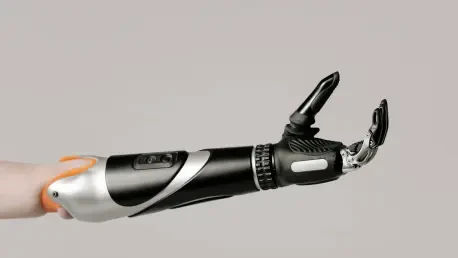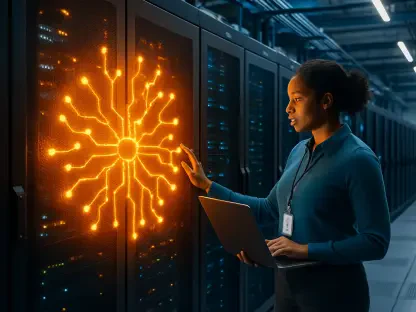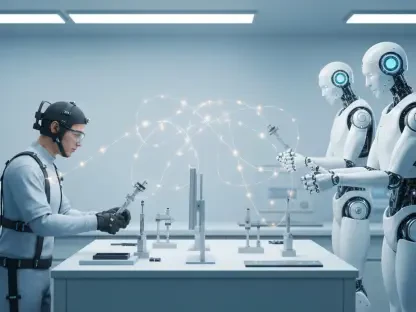The rapidly advancing field of robotic limb augmentation has introduced a fascinating possibility: the integration of a robotic third arm into human motor functions. Recent developments have pushed the boundaries of what was once considered exclusive to science fiction. Key advancements have highlighted how the human brain might incorporate an artificial limb, transforming this possibility into an area ripe for exploration and innovation. Researchers focus on understanding how these robotic appendages can become a seamless extension of the human body, executing precise tasks. This realm of study explores how our brains, evolved to control natural limbs, might adapt to augmented capabilities, fundamentally altering the way humans interact with their environment. Recent research led by Daniel Leal Pinheiro and Silvestro Micera aims to shed light on how effectively the human brain can adapt and generalize tasks when equipped with an artificial limb that doesn’t adhere to the natural motor control mechanisms. This investigation is particularly concerned with both the promise and the challenges that accompany robotic augmentation, especially in domains reliant on precision, such as surgery and engineering.
Exploring Brain Adaptation to Robotic Control
The brain’s capability to integrate a non-biological limb into its motor functions has been a topic of considerable interest. In their study, Pinheiro and Micera tasked participants with learning to control an artificial arm equipped with a clamp. What sets this research apart is the control mechanism; instead of the typical neural signals driving limb function, the arm was manipulated via breath control. Exhalation moved it forward, while inhalation retracted it. Participants practiced tasks such as grasping and button pressing with this novel appendage, focusing on how the brain adapts to these non-natural inputs. This method offered insights into the brain’s plasticity and its potential to incorporate artificial controls. Advanced robotic appendages require users to learn new motor commands, a challenge that underscores the complexity of the brain’s adaptation process. The research aligns with previous studies on virtual arm control, but it dives deeper into the intricacies of performing precise, sensory-motor tasks like grasping, traditionally managed by complex neural networks in human limbs.
Task Generalization and Efficiency
One of the most significant findings of this study concerns the brain’s ability to generalize tasks when utilizing an artificial limb. Participants who used both their natural and robotic arms to perform tasks like moving blocks showed notable improvements in efficiency over time. This improved coordination and manipulation hint at the brain’s ability to perceive the robotic appendage as an extension of the natural body. Participants became adept at performing with the robotic limb, indicating the potential for skill transference. This ability to generalize from trained tasks to new ones suggests that, with practice, artificial limbs could operate almost as effectively as natural ones. However, this skill did not extend to tasks too divergent from the training exercises, reflecting a boundary to generalization. This limitation was stark in multitasking scenarios where tasks promised challenges when performed simultaneously. Manipulating objects with a robotic arm while executing an unrelated task, such as typing, proved difficult, emphasizing the brain’s limitations in spreading learned skills to differing contexts with artificial limbs.
Challenges in Robotic Integration
Despite optimistic outcomes, the study highlights inherent challenges in robotic limb integration. Generalization waned when tasks deviated significantly from practiced routines, revealing that the brain struggles to fully extend learned skills to novel tasks. Multitasking, a common human ability, remained a strong obstacle; participants found it difficult to manage the artificial limb’s grasp when another unrelated task demanded attention. This difficulty underscores the brain’s current limitations in adapting learned motor sequences to new, unfamiliar tasks. The reliance on simple, non-invasive control methods, like those involving diaphragm adjustments, limits the complexity and precision that such appendages can achieve, suggesting a gap between current capabilities and future aspirations. Achieving the nuanced operation akin to natural limbs would likely require more advanced, perhaps invasive interfaces, such as direct cortical implants. However, these potential solutions remain beyond today’s technological reach, mainly because of their complexity and the risks involved. This gap between ideal functionalities and current capabilities reflects an area needing extensive future research and development.
Future Implications and Research Directions
Global endeavors in robotic limb research are still at a nascent stage, with a select few teams focused on enhancing human capabilities using these advanced appendages. The exciting work proceeding in both the U.S. and Europe looks at artificial finger integration and the broad potential of this technology. Overcoming constraints in limb control could greatly benefit professions requiring precision, such as surgery or emergency response. Imagine a world where additional limbs could help surgeons perform intricate operations autonomously, reducing dependency on team-based instrument handling. While the dream of augmented humans performing with robotic precision is still unfolding, current efforts build the fundamental understanding of how the brain interacts with these new inputs. This work branches into neuroscience, aiming to decode how the brain develops new connections with artificial tools. It challenges conventional learning processes, with promising implications for rehabilitation, particularly for stroke patients or those suffering from movement disorders, providing insights into regaining motor function through adaptive training.
The Path Forward for Robotic Augmentation
The rapid advancements in the field of robotic limb augmentation have brought forth a captivating possibility: integrating a robotic third arm into human motor functions. Once a topic confined to science fiction, recent breakthroughs have expanded the limits of our imagination, paving the way for further exploration and innovation in this area. These advancements aim to determine how the human brain can incorporate an artificial limb, making it a natural extension of the body capable of executing precise tasks. Researchers delve into understanding how our brains, which evolved to control natural limbs, might adapt to new capabilities, fundamentally altering human interactions with their surroundings. The research led by Daniel Leal Pinheiro and Silvestro Micera seeks to illuminate how effectively the human brain can adapt and tackle tasks using an artificial limb, which doesn’t follow natural motor control mechanisms. This exploration is crucial, especially in fields requiring precision, like surgery and engineering, and focuses on both the potential and challenges of robotic augmentation.









